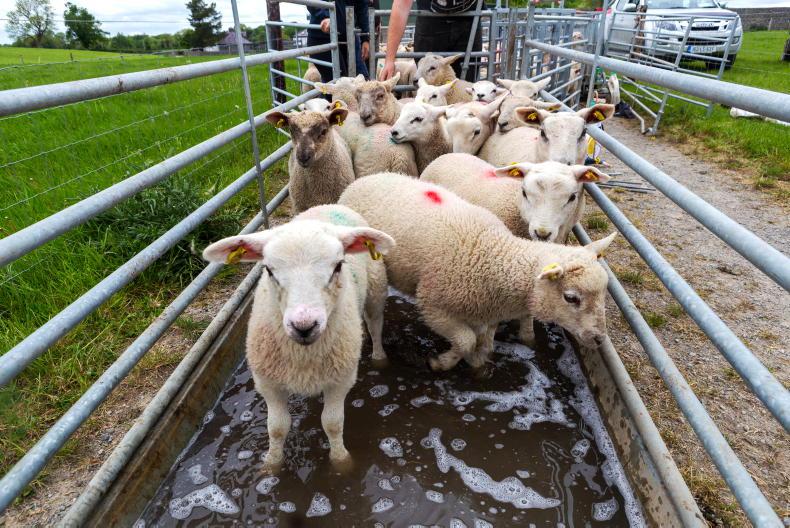There are variable reports of a significant incidence of scald in young lambs in certain flocks.
Scald is caused by bacteria present in soil and faeces establishing an infection through damaged skin.
This can be as simple as the soft tissue between the hooves of lambs being more prone to infection due to the sharp variation in weather and ground conditions.
Identification
Lambs with scald can be easily identified, as they will quickly become lame and slow to walk, with performance hit hard.
The infection can be identified by a pink-red inflammation between the hoof claws, with a white or grey paste-like scum on the surface.
Early intervention is important
Early intervention is important and will greatly cut down on the risk of an outbreak occurring. If untreated, it can progress to footrot.
Footbathing or the application of an appropriate foot spray if spot treating will be sufficient to treat and keep on top of infection.
Copper and zinc sulphate remain the two most common products used and should be diluted at a rate of 10%, while care should be taken when using formalin (take necessary health and safety precautions) with dilution rates of 3% to 5% recommended.
Regular treatment
Lambs will be difficult to get into a foot bath at a young age and may benefit from following ewes to become accustomed to it.
Running sheep through a footbath on each occasion they are handled for tasks such as treating for nematodirus, clostridial disease vaccination or weighing is highly recommended, as it will deliver twofold in addressing any scald issues and also help sheep become accustomed to the practice.






 This is a subscriber-only article
This is a subscriber-only article











SHARING OPTIONS: